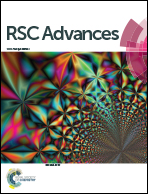Electronic and optical properties of Janus ZrSSe by density functional theory
Abstract
In the present work, we investigate systematically the electronic and optical properties of Janus ZrSSe using first-principles calculations. Our calculations demonstrate that the Janus ZrSSe monolayer is an indirect semiconductor at equilibrium. The band gap of the Janus ZrSSe is 1.341 eV using the Heyd–Scuseria–Ernzerhof hybrid functional, larger than the band gap of ZrSe2 monolayer and smaller than that of ZrS2 monolayer. Based on the analysis of the band edge alignment, we confirm that the Janus ZrSSe monolayer possesses photocatalytic activities that can be used in water splitting applications. While strain engineering plays an important role in modulating the electronic properties and optical characteristics of the Janus ZrSSe monolayer, the influence of the external electric field on these properties is negligible. The biaxial strain, εb, has significantly changed the band of the Janus ZrSSe monolayer, and particularly, the semiconductor–metal phase transition which occurred at εb = 7%. The Janus ZrSSe monolayer can absorb light in both visible and ultraviolet regions. Also, the biaxial strain has shifted the first optical gap of the Janus ZrSSe monolayer. Our findings provide additional information for the prospect of applying the Janus ZrSSe monolayer in nanoelectronic devices, especially in water splitting technology.



 Please wait while we load your content...
Please wait while we load your content...